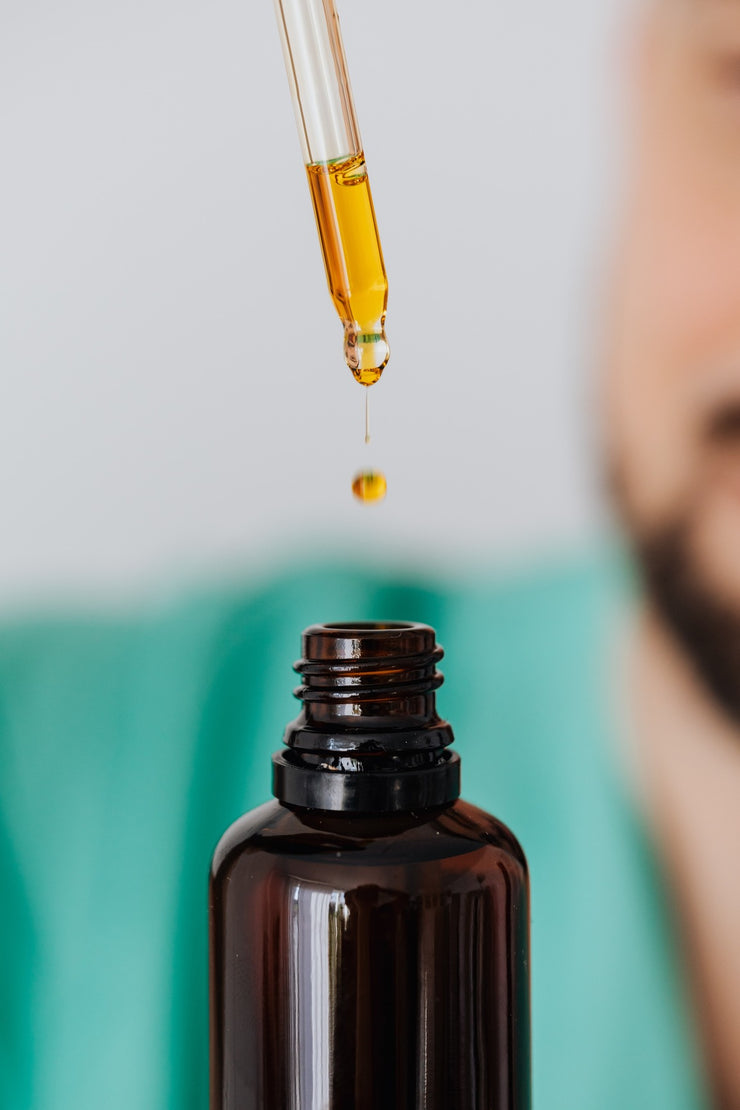What Colour Is CBD Oil?


You’ve finished enjoying your first bottle of CBD oil, but when you go shopping for another you just can't seem to find one that matches the original.
The packaging and concentration are the same, but why is the colour so different?
This can be confusing, especially if CBD products are brand new to you. People get confused over the colour of CBD oil so often we decided to answer it in this article.
While the colour of CBD oil doesn’t necessarily impact either the taste or effectiveness of the product, it can tell you more about the processes behind its manufacture.
A particular colour will tell you which method was used to extract CBD from the plant, what hemp extract was used, which other ingredients are present and what carrier oil it is suspended in.
You might see CBD oil in clear, orange, dark brown and almost black colours. Here’s what you should know.
The Hemp Extract
When you go shopping for CBD oil you’ll find it in three forms: CBD isolate oil, broad spectrum CBD oil and full spectrum CBD oil.
CBD isolate is usually a white powder-like substance in its raw form. When mixed with a colourless carrier oil like coconut oil, it dissolves to produce a fairly colourless product.
This is why most CBD isolate oils are clear.
On the other hand, broad-spectrum CBD and full-spectrum CBD are much darker in their raw forms. That’s because they contain an array of additional plant materials including other cannabinoids and terpenes in their natural form.
In some situations, one sample might be darker than the other depending on the Cannabis plant they are being extracted from, meaning that many CBD oils of identical content can vary in colour between batches.
When these extracts combine with a carrier oil, you’ll notice a range of different potential colours from golden brown to a dark brown. When the extract is more heavily concentrated, the CBD oil looks even darker.
The Extraction Method
To get any CBD extract, you have to go through a specific extraction process. This means separating the parts of the plant you want to use from the rest of the plant you aren’t going to use.
Most CBD oil producers use CO2 or ethanol based extraction methods as these techniques allow for accurate and comprehensive processing.
For a clearer CBD extract, CO2 extraction does a better job. If you want more raw plant colour in your CBD (as some people prefer), then the ethanol extraction method is the best.
Ethanol tends to extract the chlorophyll from the hemp plant during the extraction process, carrying its pigment across as well. The end product in this case will have a distinctive green colour.
If you see a CBD oil tincture that appears greenish, this could be a good indication that the extraction process was ethanol based.
We can’t talk about the extraction processes without mentioning that there is always some filtering that occurs. If an extract is filtered, it’s primary colouration will become lighter.
Depending on the gauge of the filter you use you might also remove some of the pigmented elements of plant matter, removing the colour overall.
Filtering an ethanol extract may remove some of the green chlorophyll to make the end product golden in colour.
The Carrier Oils
To get any CBD oil product, you have to dilute it into a carrier oil. Oils are incredibly lean CBD products, with often just two or three distinct ingredients.
In most instances, the oil will make up 97% of the product with the remaining 3% left for the extract.
These percentiles will shift a little when a carrier oil includes flavourings, however the ratio of oil to extract tends to remain the same. The carrier oil is what makes it easy for you to administer and dose your CBD oil.
Hemp oil, MCT oil and even olive oil are some of the top carrier oil choices for most manufactures.
With the carrier oil occupying the majority of the product, it obviously determines what the end results looks like.
MCT oil is clear and colourless so the end product will tend to follow this, with some picking up an orange tint depending on the darkness of the extract.
Olive oil will give it a much darker, almost golden colour, whereas a hemp oil will give the entire product a mix of deep greens and browns.
This is particularly true when mixed with broad spectrum and full spectrum extracts which come with additional hemp-sourced compounds.
Additional Ingredients
As we have mentioned most CBD oils are relatively simple and lean products.
As well as CBD extracts and carrier oil, many oils also come with additional ingredients like artificial flavours to adjust the product’s taste or smell.
Such ingredients can also impact the colour of the end product. For instance, CBD oil products with a dark chocolate flavour tend to adopt a darker colour to match.
If this flavouring is used together with, for example, a full spectrum CBD extract (extracted through the ethanol method) and uses hemp oil as a carrier, then the final product is likely to be a dark green in colour.
CBD oils that contain terpenes (another extract of the cannabis plant, chosen in particular for their taste and smell) will also tend to darken the colour of a CBD oil for the same reason that broad and full spectrum CBD extracts do.
Expiration
CBD oil has a long shelf-life, with most oils lasting up to 2 years from opening. Even after this point they tend not to be dangerous in any way, they simply lose a noticeable measure of effectiveness.
Most regular CBD oil users will never reach this 2 year mark, but knowing the signs of expired CBD oil is always useful.
An expired CBD oil will be thicker than normal and murky at first glance. Don’t confuse this with cloudiness that results from refrigeration however, as effect on the bottle can be misleading.
To be certain, place the oil at room temperature to clear the cloudiness and regain its original colour and texture. If the product persists with this thickness and unusual darkness, then there’s a chance it could be spoiled.
Expired oils will tend to taste bitter and may potentially have a notable stale smell, which is ultimately the best way to confirm whether or not an oil is expired.
Prevention is always better than loss, so be certain to keep your CBD oils stored in a cool, dark place with the lid screwed firmly on.
Summary
CBD oil comes in a wide variety of colours, each of which tell us a little about the oil itself.
The specific CBD extract, the carrier oil used and the presence of additional ingredients all effect the colour of CBD oil, but things as simple as the specific compounds within the CBD extract itself can mean that colour can vary slightly just between batches of the same CBD oil.
This ultimately has no significant effect on the oil’s effectiveness or taste, but it certainly is a surprise to many CBD users.
Although CBD oil can come in various colours for various reasons, this is rarely an indicator of the product’s quality.
Some buyers love it when their CBD oil is clear and colourless, whilst others want it golden or greenish and yet others like it dark and earthy.
Regardless of what colour is good for you, buying CBD products from reputable and reliable vendors is the best way to ensure an excellent CBD oil experience.
Sustainability